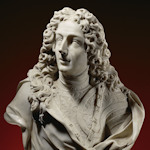
The historical figures that left the biggest imprint on perceptions of Vienna were mostly Habsburg monarchs or knew their way around a piano or paintbrush. A notable exception is Prince Eugene of Savoy (1663-1736).
- Noted military commander
- Force behind Habsburg geopolitics
- Gave us the lovely Belvedere palaces
- Book tickets for Belvedere*
- See also:
Who was Eugene of Savoy?
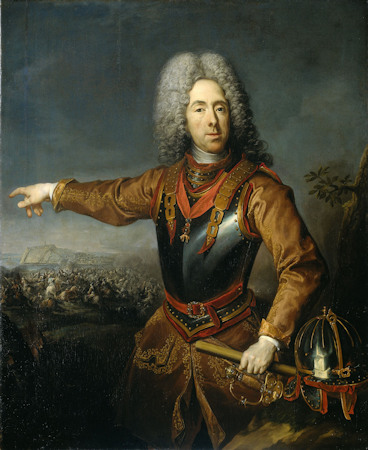
(Portrait of Eugene, Prince of Savoy by Jacob van Schuppen from 1718; photo courtesy of the Rijksmuseum)
Eugene’s parents were the Count and Countess of Soissons of the House of Savoy-Carignan. (You have to love those aristocratic names.)
Anyway, being born into 17th-century Paris aristocracy hardly feels like the start of a rags-to-riches story. But Prince Eugene might have perceived it so.
Fifth sons never have it easy, being neither heirs nor spares. Eugene wanted to enter the military but found his path blocked by the French King himself (Louis XIV), for reasons I’m not entirely clear on. Court politics I assume.
A career in the church beckoned, but had little appeal for Eugene. So he packed up some bread and cheese in a spotted red handkerchief, tied it to a stick, and set off abroad to seek fame and fortune. His path took him to the Habsburg court in Vienna.
At the time, Emperor Leopold I had urgent need of all the help he could get given the threat of the Ottoman empire on his doorstep.
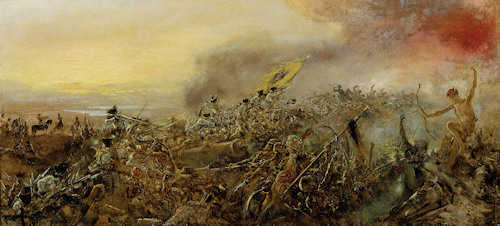
(Prince Eugene of Savoy at the Battle of Zenta; painting from around 1880/1882 by Anton Romako; oil on canvas, 47.5 x 105 cm, Belvedere, Wien, Inv.-Nr. 5581; Photo courtesy of and © Belvedere, Wien. Reproduced with permission under the terms of Creative Commons License CC BY-SA 4.0.)
Barely out of his teens, Eugene found service with the emperor and even fought at the lifting of the Ottoman siege of Vienna in 1683. A remarkable rise through the ranks followed.
The Frenchman’s military skill, charismatic leadership and willingness to get his hands dirty saw him advance to Field Marshal within ten years and become President of the Imperial War Council not many years after.
As a military commander, Eugene pursued a series of largely successful campaigns on behalf of Leopold and his successors: Joseph I and then Charles VI. He drove the Ottomans out of Hungary and won battles as far afield as the Netherlands and Belgrade.
(Vienna’s Museum of Military History has a whole gallery dedicated to Eugene’s exploits.)
Accordingly, Habsburg influence and the integrity of the Habsburg dominions owed much to Eugene’s military and strategic prowess.
Success in battle and the honours and positions that resulted brought enormous wealth, property, and the ability to sponsor and accumulate art in its varied forms.
But why does being handy with a sword and battle map make Eugene so interesting for modern-day Vienna?
Why is Eugene important?
Eugene’s influence on today’s city stems from his cultural legacy, but also the art and architecture he left behind.
Cultural legacy
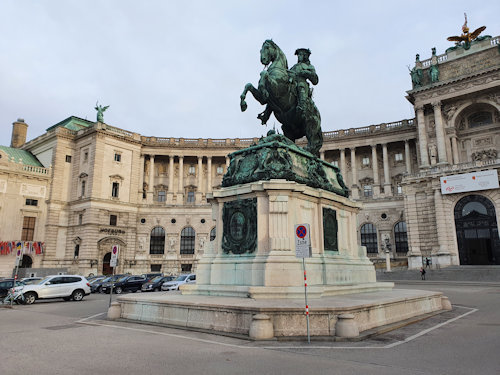
(The equestrian monument to Eugene)
When it comes to military kudos, the Habsburgs tended to lag behind the likes of the Prussians, British or Napoleon. So Prince Eugene often held an exalted historical position in that context.
You see this status reflected in, for example, the huge equestrian statue (completed in 1865, around 130 years after Eugene’s death) on the central Heldenplatz square.
One unfortunate aspect of this ongoing connection to military success abroad is misappropriation of Eugene by right-wing extremists. Fascist regimes of the 1930s and 1940s, for example, exploited his name for their ugly nationalism and racism.
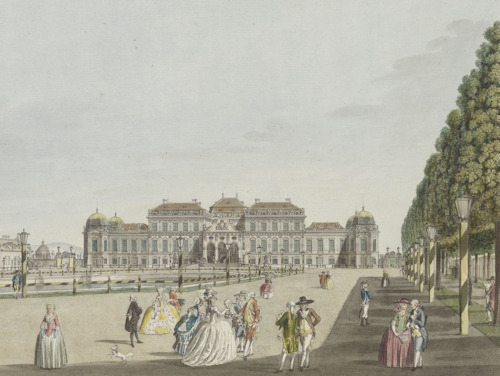
(View of the front of Upper Belvedere palace, built by Eugene. Art by Carl Schütz and published by Artaria & Co. Verlag in 1785; Wien Museum Inv.-Nr. 64307; excerpt reproduced with permission under the terms of the CC0 licence)
Today, Eugene remains recognised as a major figure in historical central European geopolitics. But more emphasis is now placed on his intellectual pursuits, such as accumulating books and building palaces.
The Austrian National Library, for example, has around 15,000 volumes from Eugene’s collection.
Eugene also finds himself increasingly cited as an icon of the LGBTQIA+ community following queer readings of his biography.
Perhaps the Prince’s most tangible legacy in Vienna, though, is his former home at Belvedere…
Belvedere: history and art

(Upper Belvedere palace during the Christmas season)
Beginning in the early 1700s, Eugene built a large residence consisting of two palaces separated by landscaped gardens. These survive in pristine condition in the form of Upper and Lower Belvedere.
Eugene also built a residence in town (no longer accessible to the public) and owned a large estate out in the country: Schloss Hof makes a fun family day if you can make it out there.
The Belvedere complex counts as one of Vienna’s main tourist attractions. For two reasons.
First, you have some gorgeous Baroque exterior and interior architecture.
Eugene had many admirable characteristics, but it seems modesty and humility were not among them. Both palaces have great marble halls and giant ceiling frescoes that place the prince’s exploits in an almost mythological context.
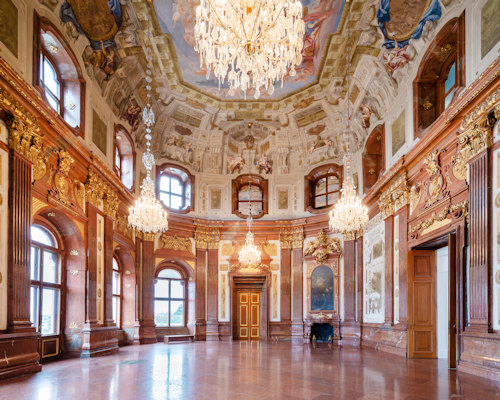
(The marble hall at Upper Belvedere; press photo © Lukas Schaller / Belvedere, Wien)
Second, Belvedere houses one of Austria’s (indeed Europe’s) great art collections.
The works range from medieval altar panels to contemporary sculptures. But the most famous pieces are certainly those by Gustav Klimt, which include this little beauty.
Crowds flocking to see a masterpiece in his palace? I feel Eugene would have approved.